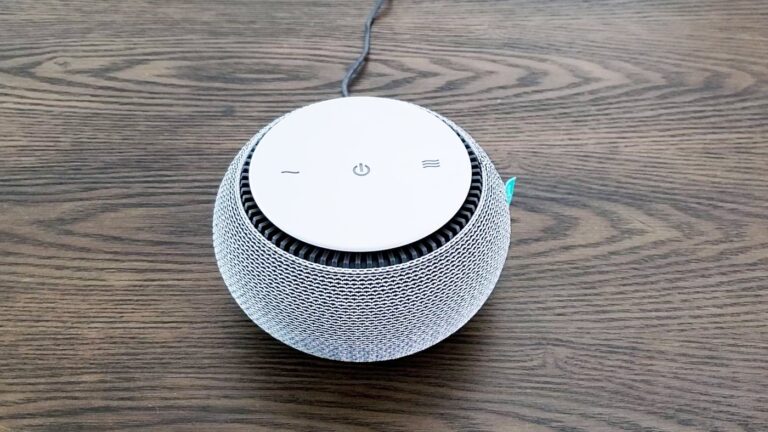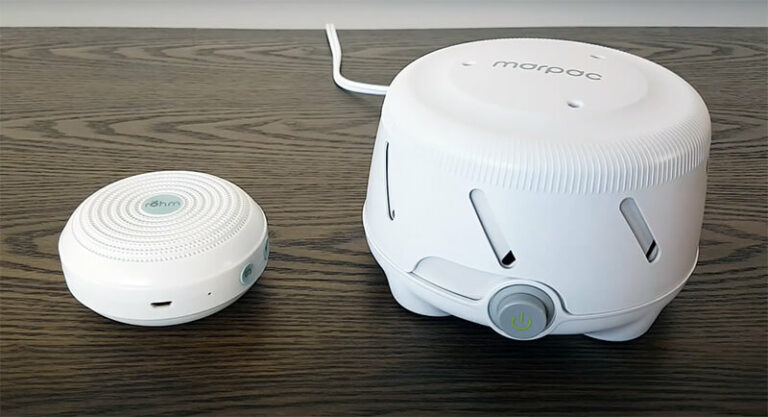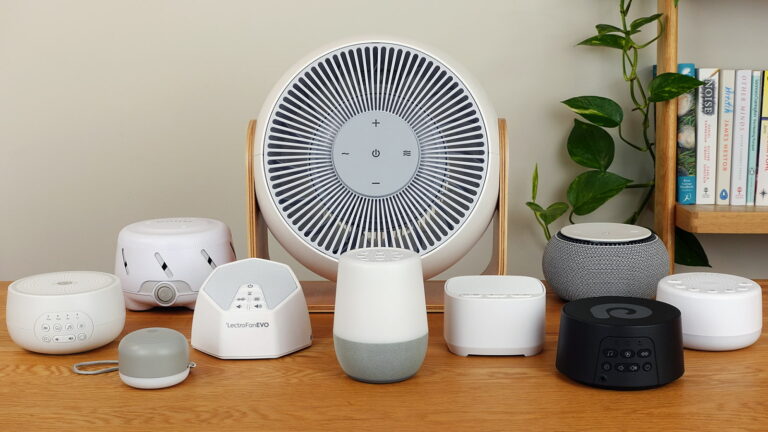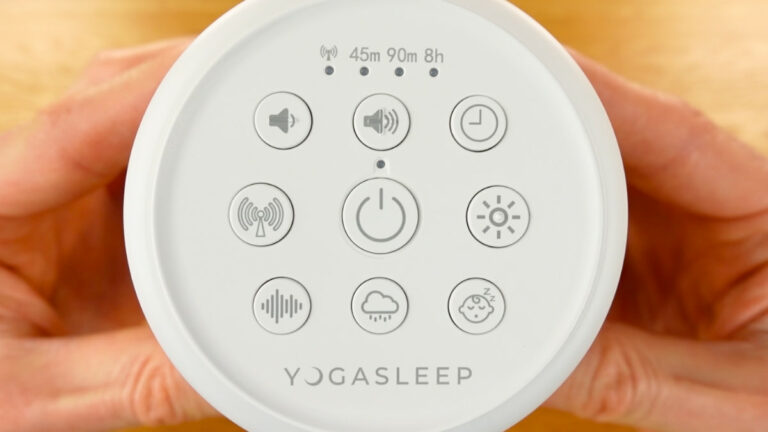Disclosure: My website is reader supported. If you purchase a product after clicking a link, I may receive a commission, at no extra cost to you. Learn more.
Overview
The SNOOZ Breez is unique in that it has two internal fans that can be controlled independently. One blows air like a normal fan; the other makes a fan sound without any airflow.
I found it works well as a bedroom fan in warm weather, and I loved having the option to just listen to the relaxing sound of the secondary fan in colder weather. It’s also very loud on the fastest speeds, and I found it blocks out external noise effectively.
It’s more expensive than standard white noise machines or basic fans, but removes the need to have two separate devices in your bedroom.
Pros
- Two fans for cooling + sound, or sound alone.
- Powerful cooling fan, with 10 speeds.
- Loud maximum volume masks external noise well.
- Manual or app controls.
- Smart features, such as auto temperature sensor and daily scheduler.
- Modern and robust design.
Cons
- Expensive compared to standard white noise machines or basic fans.
- Smart features need the app to work.
- Not as portable or compact as many sound machines.
- No nature or ambient sounds.
- Fan tilts, but doesn’t oscillate.
Price
It currently costs $199 in the US, but is not available globally. You can find it on the official SNOOZ website and also on Amazon.
Full review / video transcript
I made a few small edits to the transcript so it’s clearer to read. I also added some extra notes to clarify some points I make in the video above.
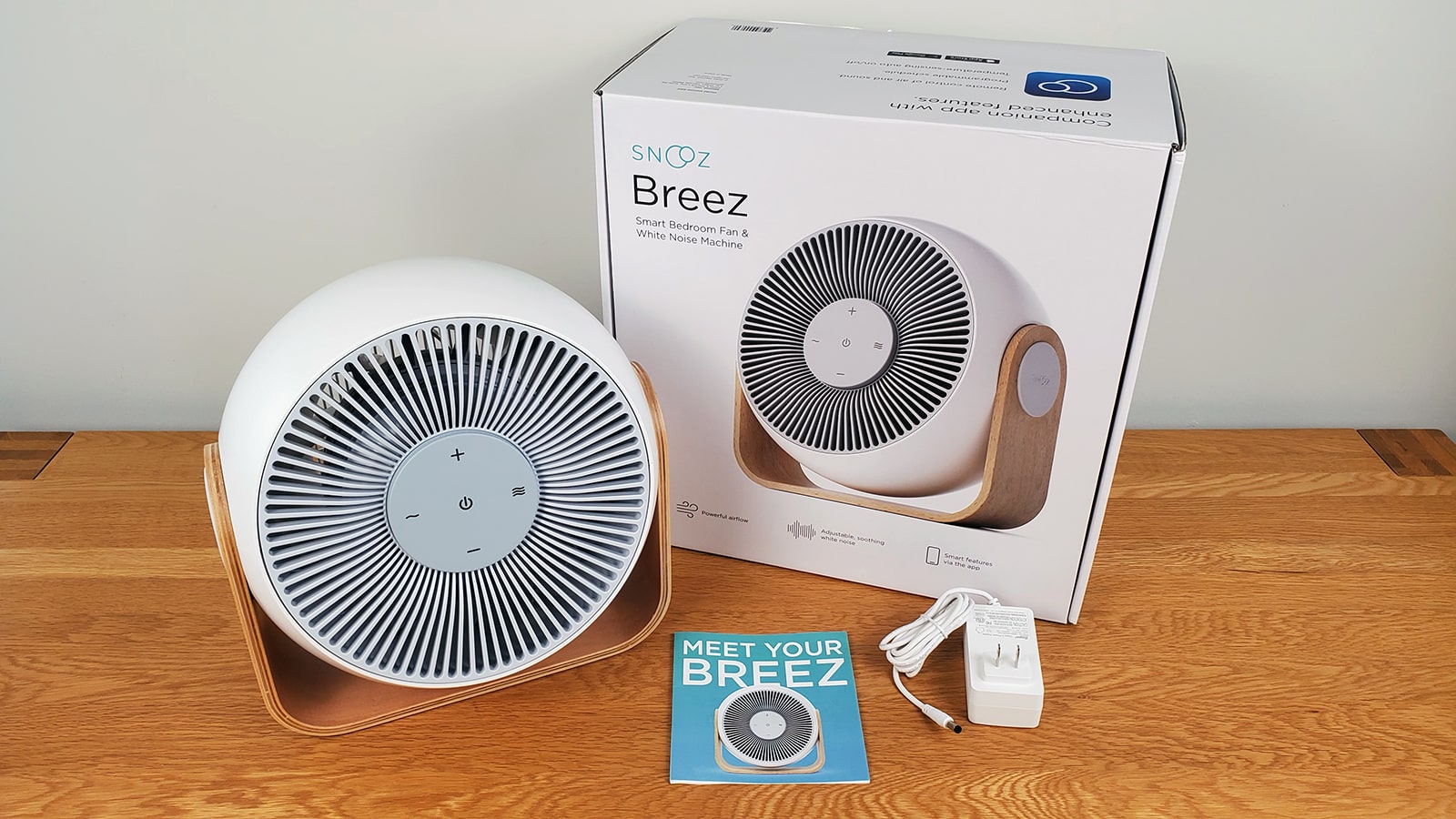
Introduction
If you enjoy the relaxing sound and cooling effect of a real fan but you don’t want cold air blowing around your bedroom in the winter, then the SNOOZ Breez might just be the answer.
After reviewing more than 30 white noise machines over the years, it’s the first one I’ve seen that has two independent fans inside, and it works really well.
In warmer weather, you can use the main fan to both cool you and provide a relaxing sound. In the winter, you can use the other fan, which still sounds great but doesn’t blow any air around the room.
You can even combine the two fans to maximize the volume and block out annoying noise, such as traffic or other people’s music.
Personally, I love the Breez. Not because it’s perfect, as you’ll see later in this video, but because it removes the need to have two separate devices. It also has some very useful features, which are accessible via the app, and I’ll cover those later in a video. So, let’s take a closer look.
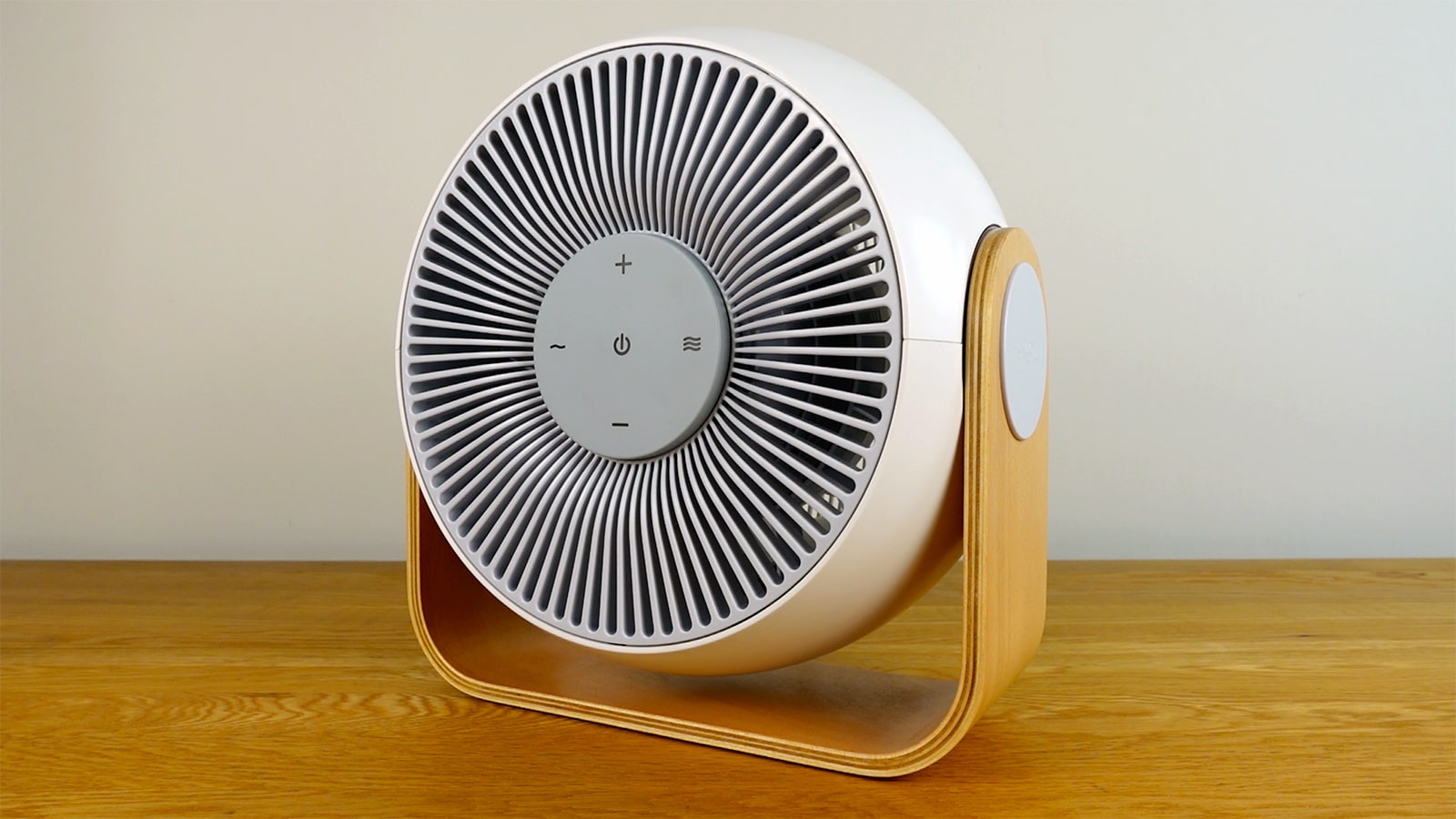
Design
Starting with the design, the Breez looks modern and sleek. I like the rounded shape of the fan unit, the off-white color, and the smooth finish of the beachwood stand. You can swivel it on its vertical axis to control the direction of the airflow, but it doesn’t oscillate, which is one of my few criticisms when comparing it to normal fans.
Power and running cost
It’s worth noting that the Breez has to be plugged in to work. One end of the power cable goes into the base of the fan unit, and the other end is a DC power adapter for a wall outlet. The cable is 6.3 feet long, which allows flexible placement in a room.
As for the running cost, I ran mine through a power meter for two hours on full blast. With a setting of 30 cents per kilowatt hour, it only cost two cents, which I think is pretty good.
Physical buttons
There are two ways to operate the Breez: with the manual buttons on the device itself or remotely with the app.
If you want to control it manually, there are just five buttons: one to turn it on, two to control the main fan speed, and two to control the white noise fan speed, and therefore the volume. They’re touch buttons, which don’t make any clicking sound, and I found they’re very responsive to light touch.
App and smart features
If you prefer, you can also connect via Bluetooth and use the app. That way, you can see what setting the two fans are on, from 1 to 10, and you can turn each of the fans off and on faster too.
An excellent feature of the Breez is the auto fan mode. If you want to, you can set the temperature you feel comfortable at, and the Breez will automatically turn on or off as it senses the room temperature rising or falling.
Another feature I know some people will appreciate is the light control. As you can see, the buttons do emit light, but you can dim them via the app and also turn them off completely if you prefer.
One last feature that I really like is the scheduler. You can set a separate time for the Breez to turn on and off each day of the week, which makes life easier if you know what setting works best for you. You can even adjust the fade time so it doesn’t abruptly switch off.
Below, you can see the app. It connects quickly, is easy to use, and has some extra features that aren’t accessible with the manual buttons on the fan itself.
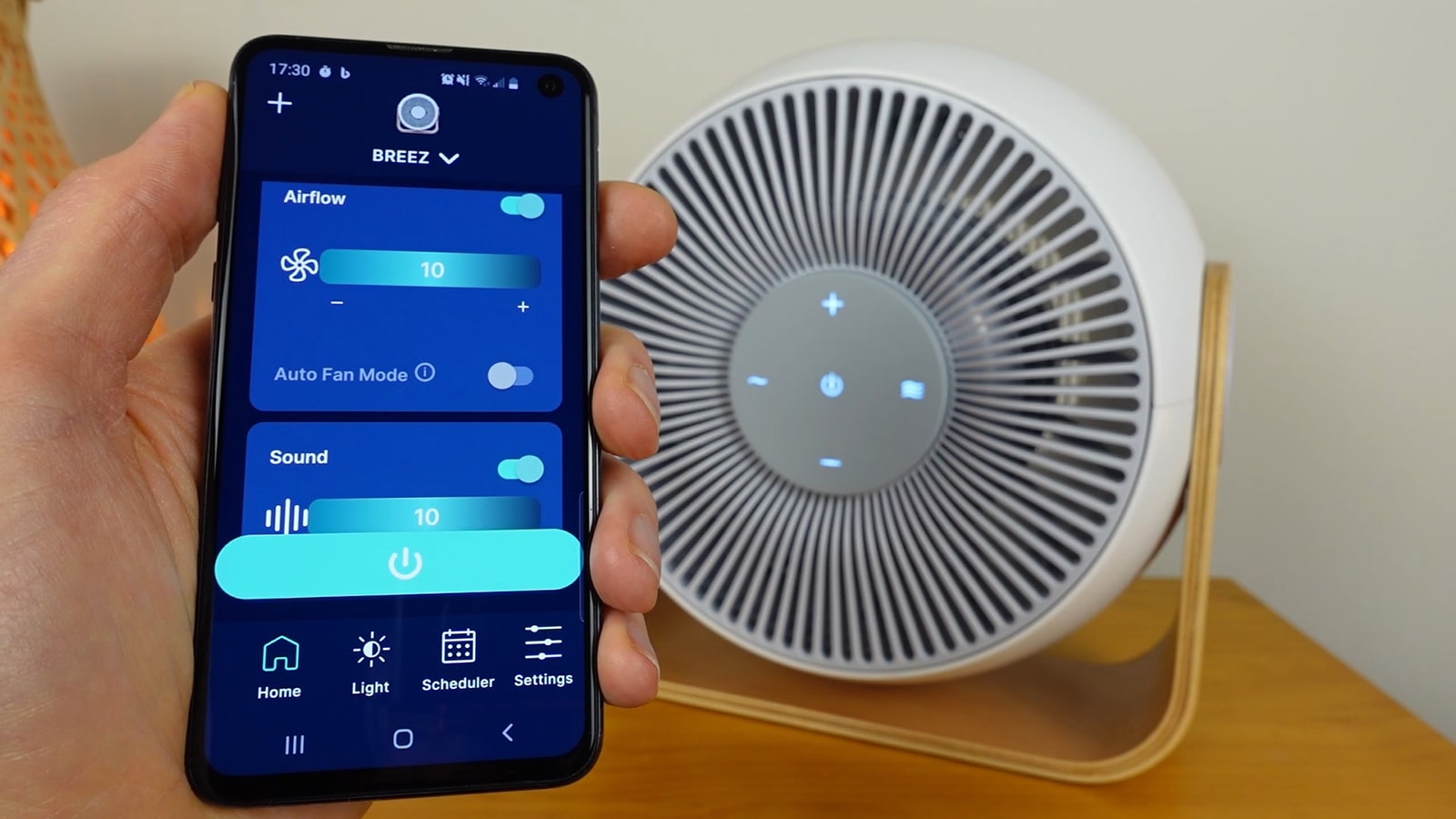
The sound of the two fans
Okay, let’s have a longer listen to how the Breez sounds now. First of all, I’m going to play all 10 settings on the airflow fan, then all 10 on the white noise fan, and then both together.
Note: If you’d like to listen to the sounds, this section begins at 2:38 in the video and lasts for just over a minute and a half.
Compared to white noise machines that use recordings, I think the authentic sound of the Breez is soothing and relaxing to listen to.
Sound masking and volume compared to other white noise machines and a desk fan
Below, you can see how the size and shape of the Breez compares to a standard desk fan and four other white noise machines. The white noise machines from left to right are the Dreamegg D3 Pro, Dohm Uno, original SNOOZ, and LectroFan Evo.
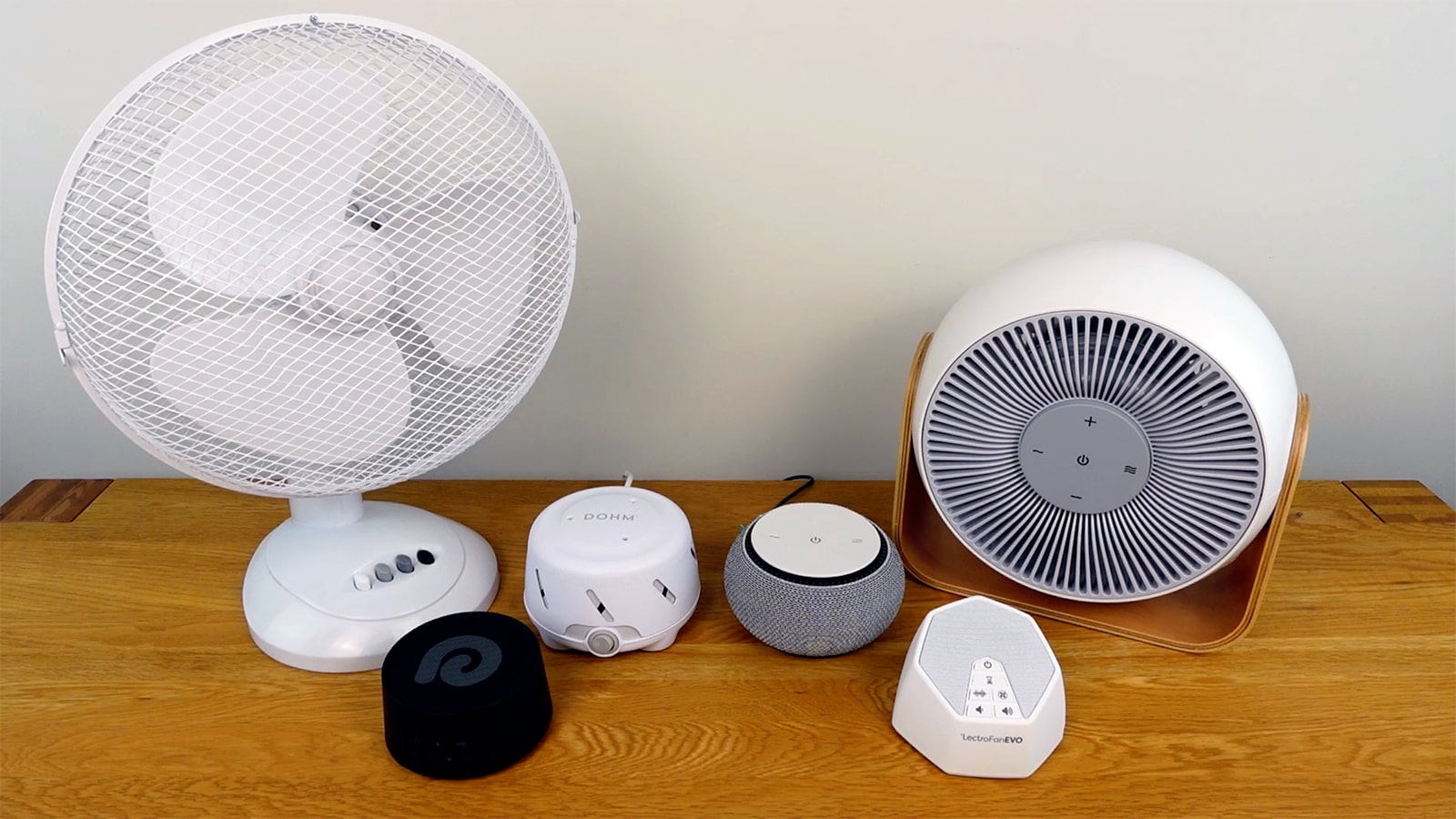
The Breez is surprisingly loud, and I found it blocks out external noise very capably, such as the birds and the traffic sound that you might hear when you’re listening to this video on headphones, because I’m recording this in my bedroom and not in a studio. It blocks out sounds like those really well.
To find out how the volume compares to other white noise machines and the standard desk fan, I did a little test with a decibel meter to get a snapshot of their maximum volume from one meter away.
The Breez came in at 76.1 dBA with both fans on max. The LectroFan Evo was 77.5 dBA. The Dreamegg D3 Pro was 74.2 dBA. The original SNOOZ was 70.3 dBA. A basic desk fan was 69.1 dBA. And the Dohm Uno was 67.5.
So, the Breez was much louder than the desk fan, the Dohm Uno, and the original SNOOZ, all of which also have real fans inside. And it held its own compared to the Evo and D3 Pro, which are two of the loudest white noise machines with speakers that I’ve tested.
Note: In the video, I briefly play the sound of each of these devices. This section at 4:34 if you’d like to listen to it.
Cooling fan
In the photo below, I have the Breez pointing directly at me while I’m in bed. When it’s this close, you’ll probably want to reduce the speed because it’s so powerful.
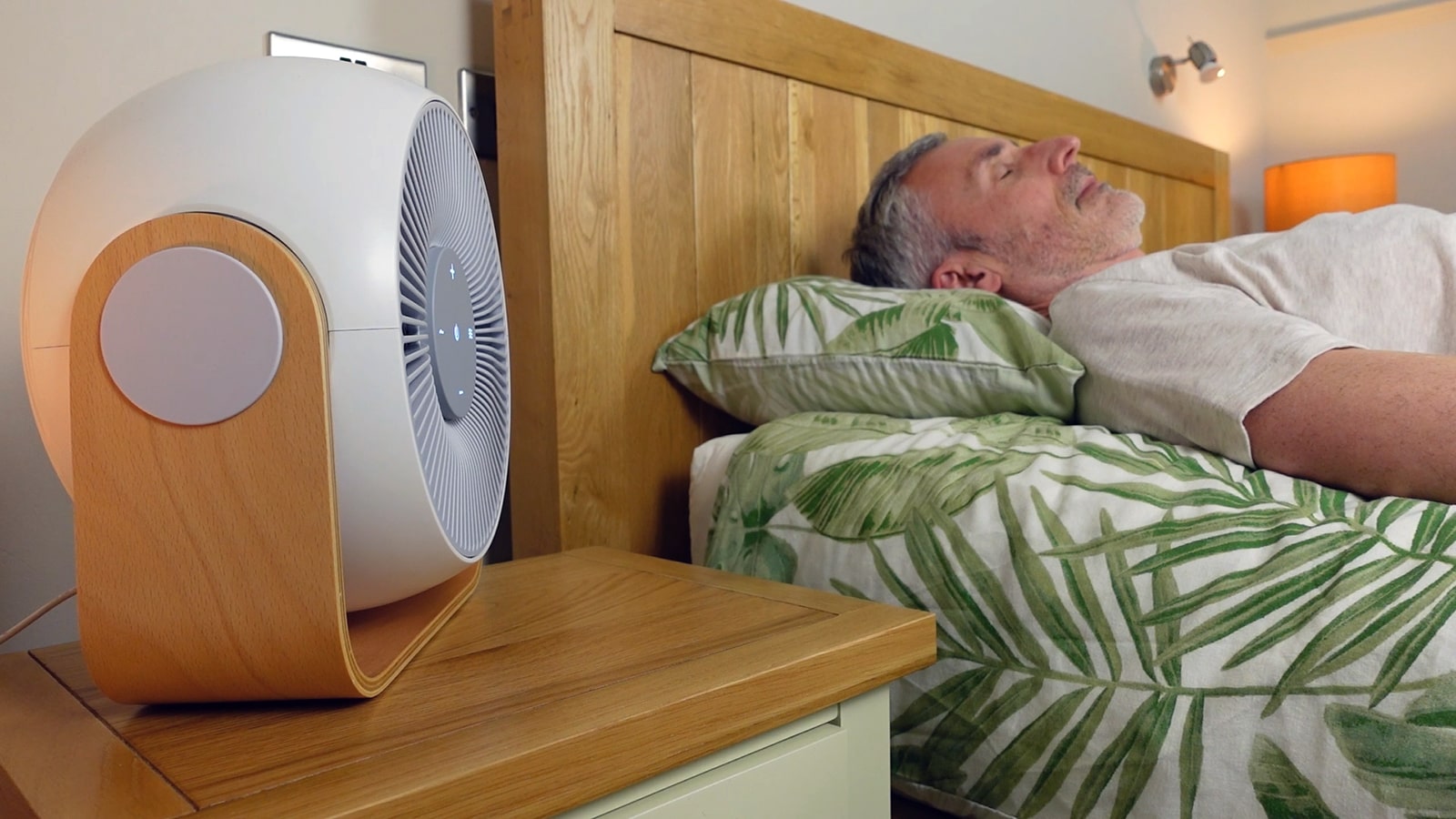
The Breez clearly works well as a white noise machine, but what about the cooling effect of the fan? SNOOZ says that the airflow capacity is 380 cubic feet per minute, with a max air speed of 20 ft per second. And I can tell you, you wouldn’t want the Breez right next to your head on a nightstand, pointing directly at you with the max speed settings because this thing is powerful.
To give you an idea of how good it is, I finally found a use for some leftover Christmas present ribbon! You can see here that the Breez has the ribbon dancing nicely in the air. By comparison, you can see here that the desk fan doesn’t keep the same ribbon flying nearly as well. So, if you do need some targeted cooling in the summer, the Breez is considerably more powerful than a basic fan.
Note: If you’d like to watch my demonstration of the fan speed, it starts at 5:56 in the video.
Price
One potential downside of the Breez is the price. It currently costs just under $200 in the US, which makes it the most expensive white noise machine I’ve used and more expensive than many fans.
However, when you combine the price of both a white noise machine and a fan, especially high-end fans like a Dyson, the price starts to look much more reasonable.
In the table below, you can see some example prices of different combinations of white noise machines and fans. These were accurate at the time of filming the video, on 15 February, 2024. If you read this article much after that date, the prices may have changed, but it should still give you an idea of the range.
| Devices | Price (USD) |
|---|---|
| Snooz + Dyson Pure Cool | $478.99 |
| Snooz + Vornado 660 | $219.98 |
| Breez | $199.99 |
| Snooz + Honeywell QuietSet | $129.94 |
| Snooz + basic fan | $99.98 |
| LectroFan Evo + basic fan | $79.94 |
| Dohn Uno + basic fan | $56.98 |
Pros
Let’s run through the key pros and cons as I see it, and then I’ll give you my final verdict.
Starting with the pros, the main one for me is that there are two independent fans, so you can have noise and cooling in the summer, or just noise in the winter.
The main fan is powerful, but there are 10 speed settings to tone it down if you need to.
The maximum volume with the fan and white noise settings on 10 is very loud, so it blocks out external noise effectively.
It can be controlled manually or remotely with the app if you don’t want to get out of bed.
The app has some useful smart features, such as the auto temperature sensor and timers. And it has a modern, sturdy, and robust design that should last the test of time.
Cons
As for the cons, it’s quite expensive, especially compared to a standard white noise machine or basic fan.
Most of the smart features are only accessible through the app, with only basic manual controls.
It’s not as compact or portable as most white noise machines.
There are no other sounds like nature or ambient sounds.
And although you can adjust the direction manually, the fan doesn’t oscillate, so the air will only flow in one relatively narrow tunnel.
Verdict
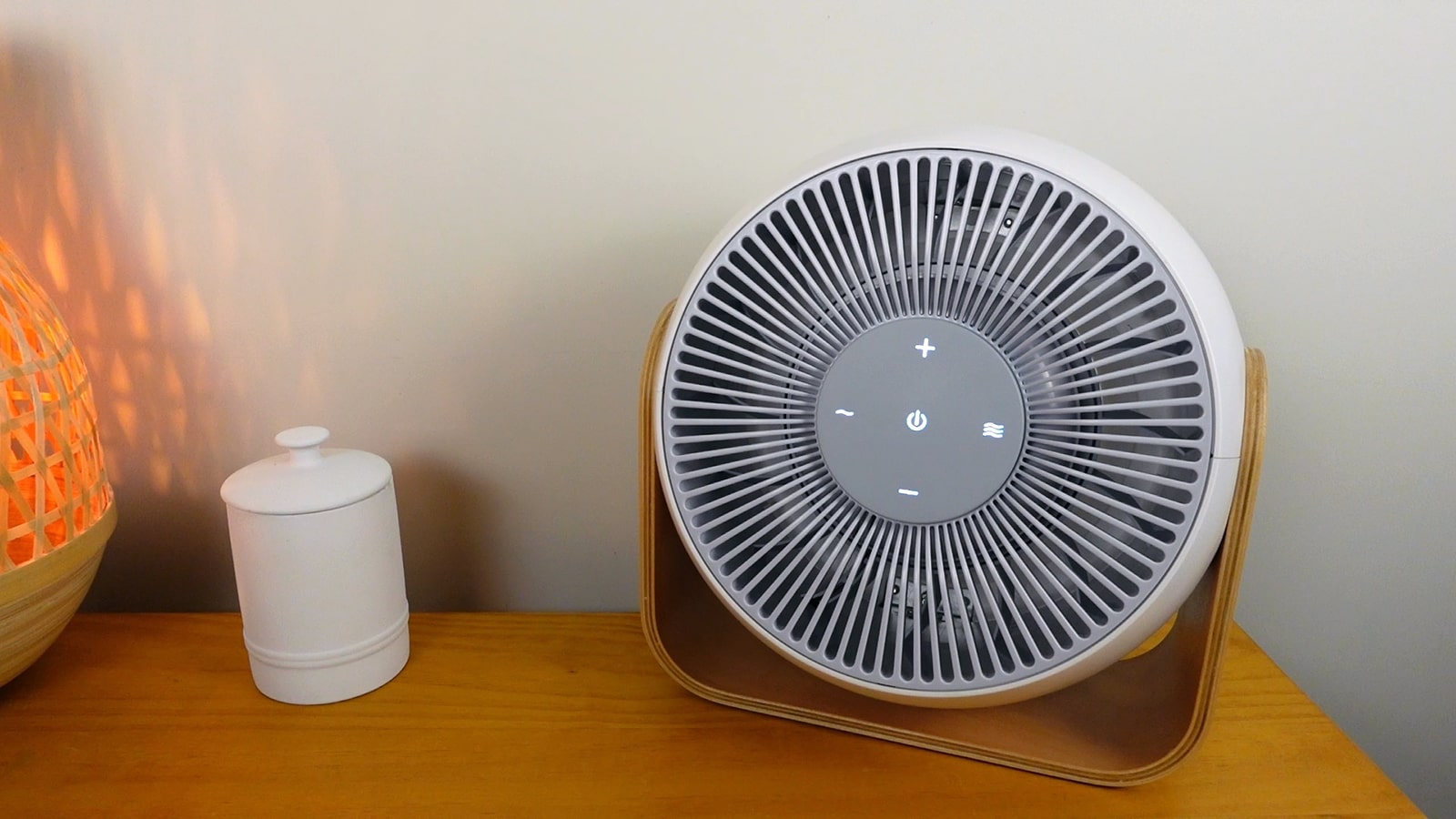
My final verdict is that as a two-in-one fan and white noise machine, the Breez is a fantastic device. While I don’t think it’ll be the best choice for everyone, I do think that it meets a particular need just right.
If you prefer the sound of a real fan rather than recordings, and you naturally use a fan to cool you in the summer but you don’t want a fan blowing air around your room in the winter, then the Breez gives you flexibility without needing to buy two separate devices.
And if you typically use white noise or a fan to block out external noise that’s disrupting your sleep, work, or study, for example, then it’s a very capable device with loud maximum volume. But it also has incremental speed settings, which naturally tones down the volume, so you can respond to the environmental noise around you appropriately.
Additional information not in the video
When I create video reviews, there are invariably some points I miss out – either due to time constraints or because I naturally find out more about a product over time.
So here are some extra details I think might be useful:
- The dimensions are: 11.25 inches (length) X 7 inches (width) X 11.75 inches (height).
- It weighs 5.8 pounds.
- The max airflow fan motor speed is 1700 RPM.
- It comes with a 100 nights trial period and two year warranty.
- You don’t hear a motor sound like you do with many normal fans. It’s just the rushing air sound that you’ll hear.
- The fan speed fade out can be set from two to ten minutes.
- In the volume section, I use the dBA measurement. The A-weighted decibel scale (dBA) is a method of measuring sound levels that adjusts for the human ear’s sensitivity to different frequencies, emphasizing frequencies that are more easily heard by humans. It gives a more accurate representation of how loud or potentially harmful a sound feels to us, making it useful for assessing noise pollution and hearing safety.
If you have any questions about points I may have missed, let me know in the comments below and I’ll do my best to answer them.

